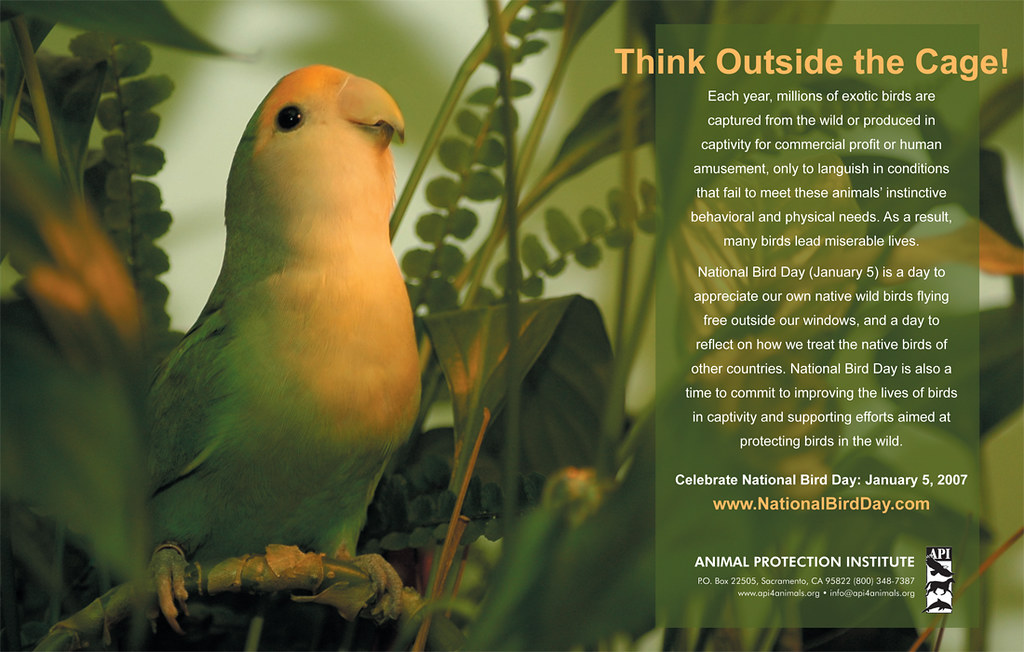On National Bird Day, International Paper (IP) and its longstanding collaborator, the National Fish and Wildlife Foundation (NFWF), are observing the tangible impact of restoring forest habitats and practicing sustainable forest management on bird populations in the Mississippi Alluvial Valley. This region is crucial, as it serves as the annual return destination for 40% of North America's waterfowl and 60% of all U.S. migratory bird species.
Thanks to the support provided by NFWF and IP through their Forestland Stewards Partnership, there is optimism for the well-being of various bird species, including northern pintails, mallards, Swainson’s warblers, and numerous other wetland and forest-dwelling birds that rely on healthy forests for their survival and prosperity.
The partnership allocates grants to local organizations, such as the Mississippi River Trust, enabling them to collaborate directly with private landowners. Together, they voluntarily engage in tree planting initiatives and sustainable management practices for existing forests. These efforts contribute to the creation of thriving habitats for birds, offering access to essential food sources like insects and acorns that are derived from well-maintained forests.
As of now, the Forestland Stewards Partnership has funded projects that, upon completion, will have collectively restored, enhanced, or protected over 150,000 acres of bottomland hardwood and wetland habitat in the Mississippi Alluvial Valley region.
“When you can see the bright yellow, black-capped Kentucky warblers foraging for food in the understory of a bottomland hardwood forest, the value of proper forest management is clear,” said James Cummins, president of the Mississippi River Trust. “Healthy forests support all wildlife, from species that find their food on the forest floors, to those that thrive in healthy wetlands, to those that nest in the treetops.”
Bottomland forests, crucial habitats for birds like the Kentucky warblers, once spanned over 24 million acres across the Mississippi Alluvial Valley, covering portions of seven states from the southern end of Illinois to coastal Louisiana. However, by the 1990s, less than 25 percent of this forested area remained, mainly due to conversion into cropland.
The partnership focuses on forest restoration, habitat enhancement, wetlands improvement, and the voluntary conservation easement protection to collaborate with landowners. Their goal is to ensure the region continues to serve as a sustainable seasonal residence for migratory birds, waterfowl, and year-round resident birds while also benefiting the local communities.
The success of these initiatives depends greatly on the cooperation between public and private partners, particularly the voluntary participation of private landowners who own a significant portion of the land in this area. Ongoing efforts are concentrated on private and state lands in Arkansas, Mississippi, and Louisiana, critical to the Kentucky warbler, Swainson’s warblers, American green-winged teal, and other waterfowl species.
In these regions, partners are actively engaging landowners through education and providing technical and financial assistance to help manage their forests. The aim is to strike a balance between economic needs, wildlife preservation, and demonstrate how sustainable forestry practices benefit both the community and wildlife.
Noteworthy funding partners supporting projects in the Lower Mississippi Alluvial Valley through the Forestland Stewards partnership include the U.S. Department of Agriculture’s Natural Resources Conservation Service, the U.S. Fish and Wildlife Service, and the Walton Family Foundation.
You can know more by clocking here.
Thanks to the support provided by NFWF and IP through their Forestland Stewards Partnership, there is optimism for the well-being of various bird species, including northern pintails, mallards, Swainson’s warblers, and numerous other wetland and forest-dwelling birds that rely on healthy forests for their survival and prosperity.
The partnership allocates grants to local organizations, such as the Mississippi River Trust, enabling them to collaborate directly with private landowners. Together, they voluntarily engage in tree planting initiatives and sustainable management practices for existing forests. These efforts contribute to the creation of thriving habitats for birds, offering access to essential food sources like insects and acorns that are derived from well-maintained forests.
As of now, the Forestland Stewards Partnership has funded projects that, upon completion, will have collectively restored, enhanced, or protected over 150,000 acres of bottomland hardwood and wetland habitat in the Mississippi Alluvial Valley region.
“When you can see the bright yellow, black-capped Kentucky warblers foraging for food in the understory of a bottomland hardwood forest, the value of proper forest management is clear,” said James Cummins, president of the Mississippi River Trust. “Healthy forests support all wildlife, from species that find their food on the forest floors, to those that thrive in healthy wetlands, to those that nest in the treetops.”
Bottomland forests, crucial habitats for birds like the Kentucky warblers, once spanned over 24 million acres across the Mississippi Alluvial Valley, covering portions of seven states from the southern end of Illinois to coastal Louisiana. However, by the 1990s, less than 25 percent of this forested area remained, mainly due to conversion into cropland.
The partnership focuses on forest restoration, habitat enhancement, wetlands improvement, and the voluntary conservation easement protection to collaborate with landowners. Their goal is to ensure the region continues to serve as a sustainable seasonal residence for migratory birds, waterfowl, and year-round resident birds while also benefiting the local communities.
The success of these initiatives depends greatly on the cooperation between public and private partners, particularly the voluntary participation of private landowners who own a significant portion of the land in this area. Ongoing efforts are concentrated on private and state lands in Arkansas, Mississippi, and Louisiana, critical to the Kentucky warbler, Swainson’s warblers, American green-winged teal, and other waterfowl species.
In these regions, partners are actively engaging landowners through education and providing technical and financial assistance to help manage their forests. The aim is to strike a balance between economic needs, wildlife preservation, and demonstrate how sustainable forestry practices benefit both the community and wildlife.
Noteworthy funding partners supporting projects in the Lower Mississippi Alluvial Valley through the Forestland Stewards partnership include the U.S. Department of Agriculture’s Natural Resources Conservation Service, the U.S. Fish and Wildlife Service, and the Walton Family Foundation.
You can know more by clocking here.


 Sustainable Forest Restoration: Protecting Bird Habitats in the Mississippi Alluvial Valley with International Paper's Partnership
Sustainable Forest Restoration: Protecting Bird Habitats in the Mississippi Alluvial Valley with International Paper's Partnership





 Companies
Companies